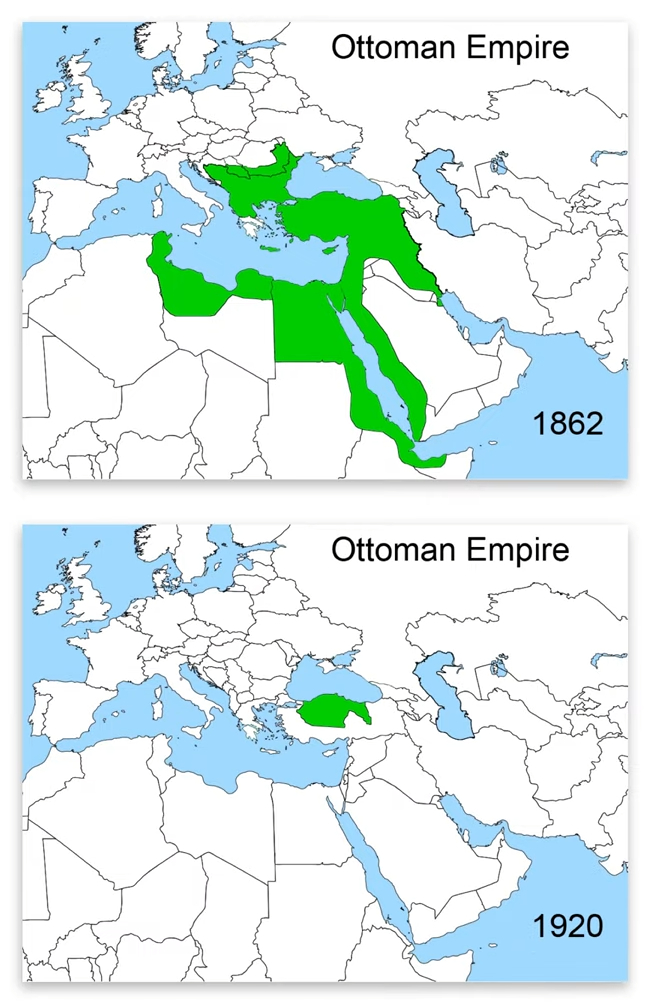Map by Esemono / Wikimedia Commons
Looking at these two maps side by side tells one of the most dramatic stories in modern history.
In 1862, the Ottoman Empire was still a formidable force stretching across three continents. By 1920, it had been reduced to a small territory in Anatolia that would soon become the Republic of Turkey (Türkiye).
What happened in those 58 years reveals how empires rise and fall, and how the map of our modern world was drawn.
The Empire at Its Twilight
The 1862 map shows an empire that still commanded respect.
The Ottomans controlled the Balkans in Europe, the entire Eastern Mediterranean coast, the Arabian Peninsula, and North Africa, including Egypt and Libya. This was an empire that had once threatened Vienna and ruled over countless ethnic and religious groups.
But by the mid-19th century, cracks were already showing. European powers increasingly interfered in Ottoman affairs, and nationalist movements were gaining momentum across the empire’s diverse territories.
The Long Goodbye
Between 1862 and 1920, the Ottoman Empire hemorrhaged territory at an alarming rate. The empire lost its North African possessions to European colonial powers, with France taking Algeria and Tunisia, and Italy seizing Libya.
The Balkans erupted in nationalist revolts, with Greece, Serbia, Bulgaria, and Romania each breaking away to form independent nations. Each loss weakened the empire further, both economically and militarily.
World War I: The Final Blow
The death blow came with World War I. The Ottomans made the fateful decision to side with Germany and Austria-Hungary.
When the Central Powers lost the war, the empire faced complete dismemberment. Arab territories were carved up between Britain and France under the mandate system. The Arabian Peninsula broke away entirely. Greece occupied parts of western Anatolia.
By 1920, the once-mighty empire had shrunk to just a small green patch on the map centered around Ankara and Istanbul.
Legacy and Lessons
The collapse of the Ottoman Empire reshaped the modern Middle East, creating borders and conflicts that persist today. The artificial boundaries drawn by European powers often ignored ethnic and religious realities on the ground, sowing seeds of future instability. Meanwhile, from the ashes of the Ottoman state, Mustafa Kemal Atatürk would forge modern Turkey (Türkiye), transforming what remained into a secular, nationalist republic.
These maps remind us that even empires that last for centuries can vanish within a lifetime. They also show how the world we live in today is the product of decisions made a century ago, for better or worse.
Help us out by sharing this map:
